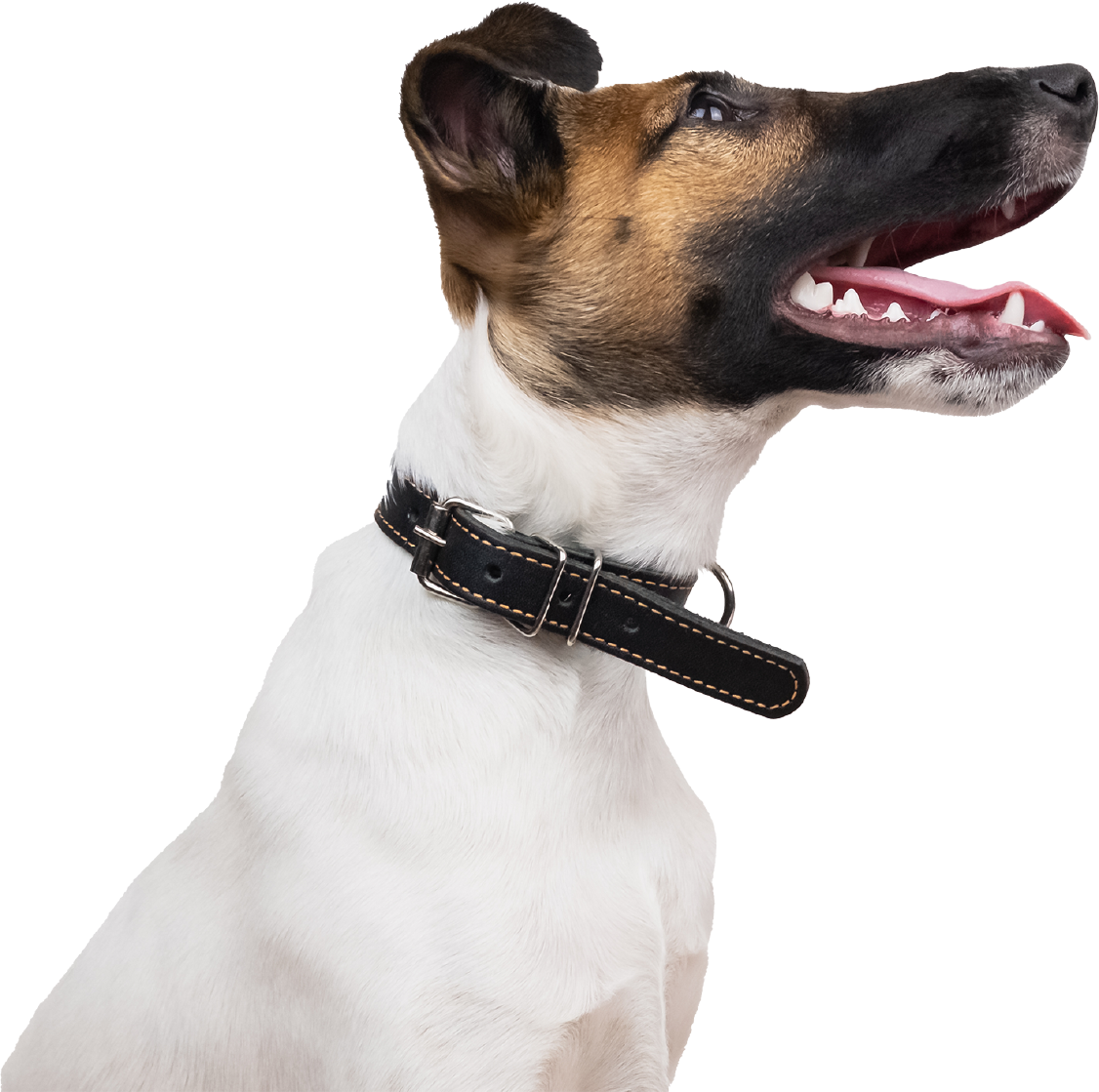10 Dog Winter Safety Tips

As we make our way into the colder months, it’s important to consider the well-being of our furry friends when the weather changes. There are several factors to take into account when it comes to the safety of pets in the winter months, especially when there is snow and salt on the ground. Your dog’s breed, fur, skin and nail types are also worth considering in their, and your, approach to the frigid weather. Here we’ll cover a few tips to make your winter enjoyable, safe, and snugly with your best friend!
- Protect your dog’s paws
Too much exposure to the elements can cause irritation, cuts, or blistering, and frostbite can occur when outside for longer periods. Do your best when walking to keep your dog away from ice, heavy snow, or freeze. If you do intend to take your dog on longer walks or outdoors to play, then you may consider a pair of booties to protect their paw pads. There are also balms and waxes that could add a layer of protection on your dog’s feet when in harsher weather. Trimming their foot hair is another option to consider, especially if you have a breed with very long, curly, or fuzzy hair. Ice could cling to the fur if it is too long, causing painful icicles or balls to accumulate on your dog’s feet. Snow-melting salt also contributes to paw irritation if your dog walks through salted sidewalks or roadways. We’ll discuss the other possible harmful effects of salt below but ensure that you wipe your dog’s feet with a wet cloth upon coming inside to rid their paws of all salty residue.
- Know your dog’s limits
We are all susceptible to frostbite or hypothermia in frigid climates, but some more so than others. Try not to leave your dog outside for long periods of time, and if they are in an outdoor area make sure that it is a small enclosed space with access to warmth, and where they can retain body heat.
Much older or much younger dogs also have a more difficult time regulating their body heat, the same way that humans do, so take their age into account when evaluating if they could be suffering from exposure to the cold. Sweaters, coats, and jackets are a worthwhile investment for the winter months, as well as the previously mentioned booties to protect their paws. Not only will you have fun dressing your dog in an adorable wardrobe, but you’ll be further protecting your best friend and supporting their comfort! This is especially important for shorter hair dog breeds with less defenses to the cold built in than those of fluffier dogs.
- Tweak their meal plan if necessary
If your dog is active and goes outside frequently in the winter, then they may need to consume more calories in order to retain body heat. The opposite may be true for animals that are mostly inside, or inside more often, in the winter months. If your dog partakes in less activity and remains mostly indoors due to the elements, then they may require slightly less food to avoid weight gain. If they must stay inside most of the time then try implementing indoor games and exercise so they are still stimulated, mentally and physically, and releasing energy. It’s a good idea to consult with your vet if you think your dog may be in need of an altered diet in the colder months.
- Be aware of ingestion
This is especially important if you know you are in an area or on a street that has been salted after the snow. Aside from salt being a possible irritant to a dog’s paws, it becomes more harmful if they ingest it. Dogs will lick their paws after they settle in upon entering the home, and if they picked up any salt on their feet then they could consume harmful toxins in the snow-melting chemicals. Always wipe each of your dog’s paws with a wet cloth after being outside in the winter. If you believe your pet might have ingested salt anyway, or another chemical, possible signs could be vomiting, diarrhea, or lethargy. If this occurs, then be sure to bring your pet in to see their veterinary doctor.
Other chemicals that are more commonly used in winter that could be dangerous to dogs are batteries, anti-freeze, human medications, and rat or mouse poison. Ensure that none of these products are easily accessible to your dog in the case of possible ingestion. Be prepared by saving the phone number for your vet, an emergency vet, and Animal Poison Control in the event of an emergency.
- Avoid thin ice—and ice in general
Not only could ice aggravate your dog’s paws and cause pain, frostbite, or cuts, but it’s difficult to tell when frozen surfaces are too thin. Avoiding walking on ice altogether is a smart decision. There’s also the possibility of slipping and falling—for you or your dog—on the ice, and avoiding potential for injury, however minor, is always a good thing. But the worst scenario of all would be either of you falling through ice that is too thin. If you find yourself near a beautiful frozen lake or pond this winter, whether with your dog or not, avoid stepping onto it.
- Always check around your car before starting it
This tip is not always directly related to dog safety, though if your dog is not under your supervision and has access to where your car is, they could certainly be seeking it out for warmth as well. This safety tip extends to all animals, including cats and wildlife. When the weather is cold and extreme, animals will seek out the warmth and shelter that the car provides. Whether they perch on the tires to curl up, or underneath for relief from the elements, or even inside the engine to generate warmth, this could be extremely dangerous. Make sure you check around the tires, hood, engine, and underneath your car each time before you start it in the winter to ensure that your dog, other pets, or wildlife are not using it as their personal shelter.
- Invest in reflective gear
Winter is much darker, and it gets dark extremely early in the evening and later in the mornings. Having reflective gear, whether it be a vest or jacket for you and your dog, as well as a reflector on their leash or collar, could be crucial for other drivers, motorists, or even bicyclists, to be able to see you clearly while you’re out walking together in the winter months.
- Be prepared around the holidays
The holidays that take place in the winter months are joyous and festive, and your dog probably loves all the fun attention and gifts, too! However, ensuring their safety when it comes to possible items they could ingest, or even people and situations they are not regularly exposed to, is key. There are lots of goodies like chocolate, holly berries, different plants and leaves, tinsel, Christmas trees, and ornaments that could all be harmful to dogs if they were able to sneakily acquire them. A useful tip is to put the number for Animal Poison Control on your refrigerator and saved in your phone, and make sure you have your vet’s and an emergency vet’s contact info saved in the event that an accident occurs.
The holidays can also bring about stressful scenarios like new people and new settings for your pet. Working with them on their reactivity, calmness, and training with certain situations and people is important so that they are better prepared when they are exposed to it. If there are children or unfamiliar pets around during the holidays be sure to monitor their exposure to your dog for the safety of both parties.
- Explore the option of an indoor potty space
If the weather outside is truly harsh, then you may want to prepare an area for your dog if they are unable to go outside to use the bathroom. In this case there are options such as pet pee pads, which are also used for puppy potty training and older dogs who struggle more with their potty breaks. You could create a designated grass patch for your dog in their own potty area. Certain dogs, especially smaller dogs, may even be taught to use a litter box. An isolated outdoor area that is more protected from the elements could also be worth setting up if there are long stretches of time that make getting outside for bathroom breaks difficult.
- Be prepared and know the signs of hypothermia and frostbite
Always be prepared and cautious with each tip discussed above to prevent hypothermia, frostbite, or other threatening cold issues to the best of your ability. However, on the chance that your dog is experiencing one of these issues, make sure you know how to spot it and how to proceed. Signs of frostbite and hypothermia include skin discoloration, painful to touch, extreme coldness of the area, swelling, and blistering. The most commonly affected areas for a dog experiencing frostbite would be the tail, ears, and paws. Seeking medical attention immediately for such issues is crucial, and interim aid treatments include moving your dog to a warm, dry area and ensuring that they are able to stay warm and dry to prevent refreezing. Do not use direct dry heat like heating pads, and do not rub or massage the area. They need to be warmed slowly and carefully with blankets or towels.
Hopefully you have now put a plan into action for how to have the safest, most enjoyable, festive, and cozy winter season with your best pal! The winter months can be harsh, and even gloomy at times, but nothing spreads warmth and cheer like the love from your dog!
 Shay Siegel is a young adult author, freelance writer, and editor from Long Island, NY. She has a BA from Tulane University and an MFA in Writing from Sarah Lawrence College. Always a lover of animals, Shay had several cats growing up. She's now a dog mom to the snuggliest rescue pit bull, Bernie. She enjoys writing on a variety of topics and sharing her love and knowledge of animals with others!
Shay Siegel is a young adult author, freelance writer, and editor from Long Island, NY. She has a BA from Tulane University and an MFA in Writing from Sarah Lawrence College. Always a lover of animals, Shay had several cats growing up. She's now a dog mom to the snuggliest rescue pit bull, Bernie. She enjoys writing on a variety of topics and sharing her love and knowledge of animals with others!

Ready to gain some healthy superpowers?
Looking to support your dogs immune system or digestive health? Need joint or calming support?
Let Waggy Show you the way



